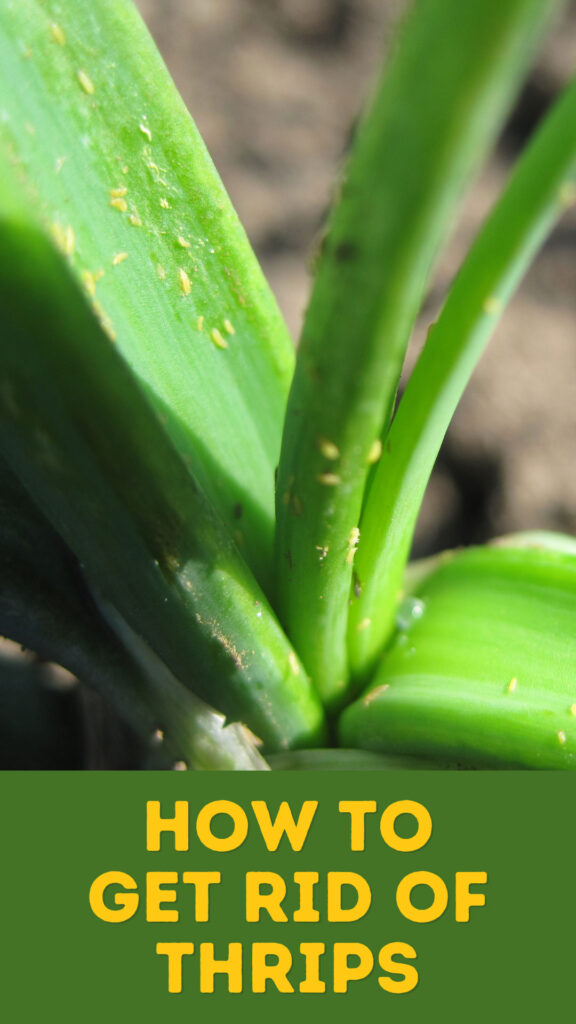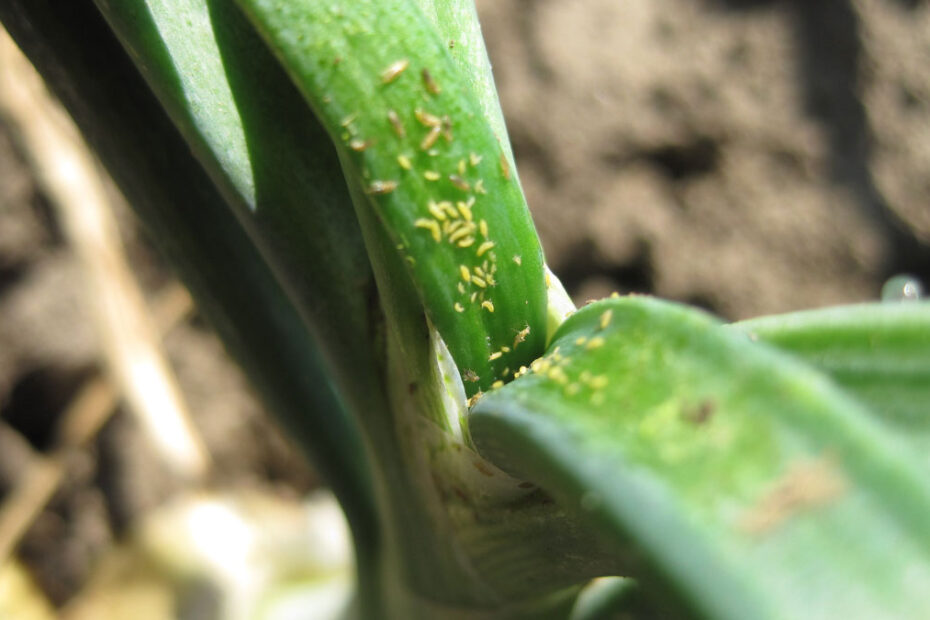Thrips, those tiny pests, can wreak havoc on your garden and indoor plants. They feed on plant sap, leaving behind discolored, damaged leaves and stunted growth. If left unchecked, a thrip infestation can quickly escalate, jeopardizing the health of your beloved greenery.
Don’t worry, though. You can take effective steps to eliminate these persistent intruders. From natural remedies to chemical treatments, there are various methods to tackle thrips and restore your plants to their vibrant, healthy state. Let’s explore the best strategies to get rid of thrips and keep your plants thriving.
Key Takeaways
- Recognize Thrips Infestation Early: Look for signs such as discolored leaves, stunted growth, and visible thrips on plants to manage infestations promptly.
- Maintain Plant Health: Keep plants healthy through regular inspection, proper watering, balanced nutrition, and pruning to make them more resilient against thrips.
- Use Natural Remedies: Employ homemade sprays like garlic, soap, and neem oil, or essential oils such as peppermint, eucalyptus, and lemongrass to control thrips naturally.
- Consider Chemical Treatments: For severe infestations, use insecticidal soaps and systemic insecticides, following guidelines carefully to protect plant health and the environment.
- Implement Long-Term Strategies: Regularly monitor plants, use sticky traps, and practice crop rotation to create a sustainable gardening environment and prevent future thrip infestations.

Understanding Thrips
Thrips are tiny insects that can cause significant damage to plants. By recognizing their characteristics and signs of infestation, you can take effective steps to protect your plants.
What Are Thrips?
Thrips are small, slender insects with fringed wings. They belong to the order Thysanoptera and are known for their plant-feeding habits.
Key Characteristics of Thrips:
- Size: Typically 1-2 millimeters long
- Color: Range from yellow to brown or black
- Shape: Elongated bodies with narrow wings
Life Cycle:
- Egg Stage: Deposited inside plant tissues, hatch within a few days
- Nymph Stage: Wingless young feed on plant juices
- Adult Stage: Mature insects often found on leaves and flowers
Common Signs of Thrips Infestation
Identifying thrips early can prevent extensive plant damage. Look for these signs on your plants:
Physical Damage:
- Discolored Leaves: Silver, yellow, or brown patches
- Stunted Growth: Reduced leaf size and overall growth
- Deformed Flowers: Misshapen or scarred petals
- Black Dots: Tiny excrement spots on leaves
- Silken Threads: Fine strands on damaged areas
- Insect Presence: Visible thrips on flowers and foliage
By knowing these signs and characteristics, you can more effectively manage and eliminate thrips from your garden or indoor plants. Use this knowledge to maintain plant health and prevent future infestations.
Prevention Techniques
Proper prevention is essential in managing thrips and protecting your plants from potential damage. Implementing these techniques helps keep your plants healthy and minimizes the chances of an infestation.
Maintaining Plant Health
Ensuring your plants are in optimal condition creates a more resilient environment against thrips. Here’s how to maintain plant health effectively:
- Regular Inspection: Check your plants frequently for any signs of pests. Early detection makes it easier to manage potential infestations. Look for discolored leaves, deformed flowers, or visible thrips.
- Appropriate Watering: Water your plants adequately to maintain their health. Overwatering or underwatering can stress plants, making them more susceptible to pests.
- Proper Nutrition: Use balanced fertilizers to provide essential nutrients. Healthy plants with adequate nutrition can better resist thrips and other pests.
- Pruning: Remove any damaged or diseased plant parts. Pruning helps prevent overcrowding, which can enhance air circulation and reduce the habitat for thrips.
Introducing Beneficial Insects
Encouraging natural predators of thrips in your garden is an effective biological control method. Consider these beneficial insects:
- Lacewings: These insects feed on thrips larvae, helping control their population.
- Ladybugs: Ladybugs are effective in reducing thrips by preying on both larvae and adult thrips.
- Predatory Mites: Introduce predatory mites, such as Amblyseius cucumeris, which specifically target thrips.
Here’s a quick reference for beneficial insects:
| Beneficial Insect | Target Stage of Thrips |
|---|---|
| Lacewings | Larvae |
| Ladybugs | Larvae, Adults |
| Predatory Mites | Various Stages |
By integrating these prevention techniques, you create a robust plan that minimizes the risk of thrip infestations. Regular plant health checks and cooperation with beneficial insects offer sustainable solutions for keeping your garden thriving.
Natural Remedies
Natural remedies effectively eliminate thrips without harmful chemicals. These methods are safe for personal and environmental health.
Homemade Sprays
Homemade sprays can deter thrips effectively:
- Garlic Spray: Mix two cloves of crushed garlic with one liter of water. Let it sit for 24 hours, strain, and spray on affected plants.
- Soap Spray: Combine one teaspoon of mild liquid soap with one liter of water. Spray the solution on plants, ensuring thorough coverage.
- Neem Oil Spray: Mix two teaspoons of neem oil with one liter of water. Add a few drops of liquid soap. Shake well and spray on the infested areas.
Essential Oils
Essential oils offer natural insect-repellent properties:
- Peppermint Oil: Combine 10 drops of peppermint oil with one liter of water. Spray on leaves to repel thrips.
- Eucalyptus Oil: Mix 10 drops of eucalyptus oil with one liter of water. Use as a spray to deter thrips.
- Lemongrass Oil: Blend 10 drops of lemongrass oil with one liter of water. Spray on plants to keep thrips away.
Utilizing these natural remedies not only controls thrip infestations but also promotes a healthier garden environment. Ensure regular application for the best results, and adjust the treatments based on the severity of the infestation.
Chemical Treatments
Chemical treatments provide a potent solution for severe thrip infestations. When natural remedies don’t suffice, consider using insecticidal soaps and systemic insecticides.
Insecticidal Soaps
Insecticidal soaps are a safer chemical option to control thrips. They work by disrupting the cell membranes of soft-bodied pests, leading to dehydration and death.
- Application: Spray thoroughly on affected plants, targeting the undersides of leaves where thrips commonly hide. Use during early morning or late evening to avoid damaging sensitive plant tissues.
- Frequency: Apply every 7 to 10 days until the infestation subsides. Regular intervals ensure you’re addressing new thrip generations.
- Advantages: Non-toxic to humans and pets, minimizing risk compared to harsher chemicals.
Systemic Insecticides
Systemic insecticides offer a robust option for both prevention and control of thrips. These chemicals are absorbed by the plant, targeting pests from within.
- Mechanism: Thrips are affected when they feed on treated plants, ensuring even hidden pests are managed.
- Application: Typically applied as a soil drench or foliar spray depending on the specific product instructions. Follow manufacturer guidelines strictly to avoid overuse.
- Duration: Effective for 3 to 12 weeks, depending on the product. One application often provides extended protection.
- Considerations: While effective, systemic insecticides can impact beneficial insects. Use judiciously to maintain ecological balance.
Including both insecticidal soaps and systemic insecticides in your pest management strategy can efficiently control thrips while safeguarding plant health. Always read and follow label instructions for safe and effective use.
Long-term Strategies
Effective long-term strategies to manage and prevent thrip infestations ensure the health of your plants and reduce the likelihood of future problems. Implementing these strategies helps in creating a sustainable and resilient garden.
Regular Monitoring
Consistently monitoring your plants is crucial in identifying thrip infestations early and taking action. Here’s how to incorporate regular monitoring into your gardening routine:
- Inspect Plants: Check the undersides of leaves and flower buds weekly. Use a magnifying glass to spot thrips, which are small and may be difficult to see with the naked eye.
- Look for Signs: Identify symptoms like discolored leaves, stunted growth, and black excrement dots. Early detection helps in prompt intervention.
- Sticky Traps: Place blue or yellow sticky traps around plants. Thrips are attracted to these colors and will get stuck, providing an indication of thrip presence.
Crop Rotation
Crop rotation involves changing the type of plants grown in a particular area over different growing seasons, which minimizes pest problems. Follow these steps to carry out crop rotation effectively:
- Plan Layout: Map out your garden and categorize plants by family. Ensure you rotate plants from different families to avoid recurring thrip infestations.
- Schedule: Develop a rotation schedule spanning three to four years. For instance, follow legumes with root vegetables, then leafy greens, and finally fruiting plants.
- Diversify Plant Types: Include a variety of plants to break the pest lifecycle. Planting non-host crops disrupts thrip breeding patterns.
Applying these long-term strategies assists in maintaining a thriving garden environment, minimizing the risk of thrip infestations, and fostering healthier plant growth. Regular monitoring coupled with effective crop rotation forms a robust defense against these persistent pests.
Conclusion
Addressing thrip infestations promptly is crucial for maintaining plant health. By recognizing the signs and characteristics of thrips, you can take effective action to manage and eliminate them. Use natural remedies for a safe and eco-friendly approach, or consider chemical treatments for severe cases.
Incorporate prevention techniques, such as regular inspections and introducing beneficial insects, to create a resilient garden environment. Long-term strategies like crop rotation and weekly monitoring will help sustain a thriving garden. With these methods, you can confidently protect your plants from thrips and ensure their healthy growth.
Frequently Asked Questions
What are thrips?
Thrips are tiny, slender pests ranging from 1 to 2 millimeters in length. They have fringed wings and come in colors from yellow to brown or black. They feed on plant sap, causing damage like discolored leaves and stunted growth.
How can I identify a thrip infestation?
Common signs of a thrip infestation include discolored leaves, stunted growth, deformed flowers, black excrement dots, silken threads, and the visible presence of thrips on plants.
Why is it important to address a thrip infestation promptly?
Thrips can cause extensive damage to plants by feeding on their sap, leading to poor plant health and development. Prompt action can prevent severe damage and ensure healthier plant growth.
What natural remedies can I use to eliminate thrips?
Natural remedies include homemade sprays using garlic, soap, neem oil, and essential oils like peppermint, eucalyptus, and lemongrass. These sprays are effective in deterring thrips without harming the environment.
Are there beneficial insects that can help control thrips?
Yes, introducing beneficial insects like lacewings, ladybugs, and predatory mites can effectively reduce thrip populations as part of a biological control strategy.
How do chemical treatments for thrips work?
Chemical treatments such as insecticidal soaps and systemic insecticides are used for severe infestations. Insecticidal soaps disrupt the cell membranes of thrips, dehydrating them. Systemic insecticides are absorbed by plants, targeting pests from within for extended protection.
What are some effective long-term strategies for managing thrips?
Long-term strategies include regular inspections, using sticky traps to detect thrips, and implementing crop rotation schedules to disrupt breeding patterns. These practices help create a sustainable and resilient garden environment.
How often should I apply chemical treatments to control thrips?
For insecticidal soaps, it is recommended to apply every 7 to 10 days, targeting the undersides of leaves. Follow the instructions on the label for systemic insecticides for specific application intervals and safety guidelines.
Can thrip infestations be completely prevented?
While itâs challenging to prevent thrips entirely, regular monitoring, maintaining plant health through proper care, and introducing beneficial insects can significantly reduce the risk of infestations and keep your plants thriving.
